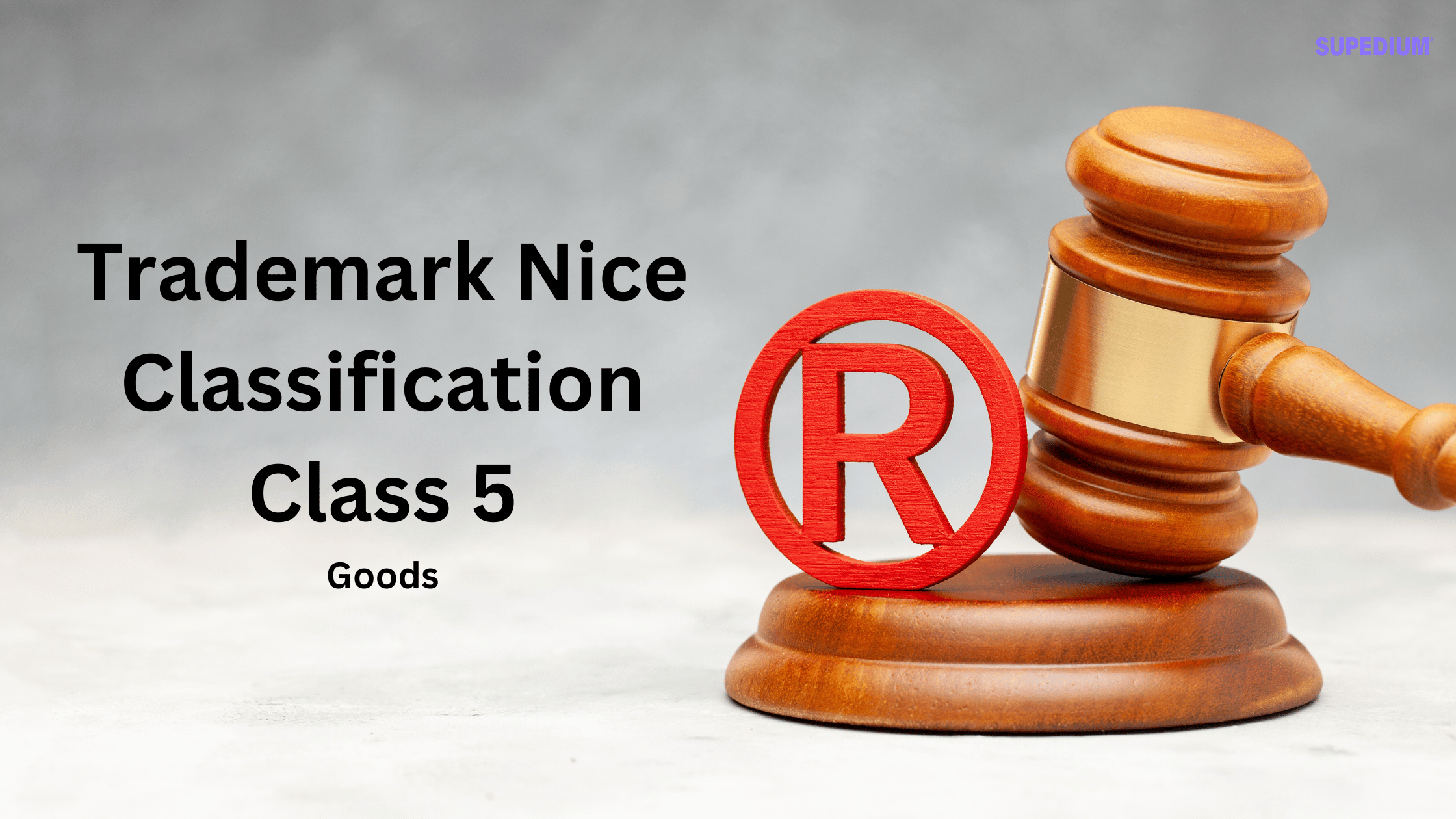Table of Contents
![]()
I. Introduction
The Nice Classification system, established by the Nice Agreement in 1957, provides a standardized classification for goods and services for the registration of marks. Among its various categories, Class 5 holds a crucial role, encompassing a range of products essential for health and hygiene. This article delves into the specifics of Class 5, outlining its key components, inclusions, exclusions, and practical implications for businesses in the healthcare sector.
II. Overview of Class 5
Class 5 primarily includes pharmaceuticals and other preparations intended for medical or veterinary purposes. This classification is vital for businesses that operate within the healthcare and wellness industries, ensuring that their products are accurately represented and protected under trademark law.
Key Categories Included in Class 5
- Pharmaceuticals: Products that are formulated to treat or prevent diseases in humans and animals.
- Medical and Veterinary Preparations: Various formulations designed to support health in both humans and animals.
- Sanitary Preparations: Products aimed at maintaining hygiene and health, distinguishing them from non-medicated toiletries.
Understanding these categories is essential for companies aiming to secure their intellectual property and navigate the regulatory landscape effectively.
III. Detailed Breakdown of Class 5
A. Pharmaceuticals and Medical Preparations
Class 5 encompasses a diverse array of pharmaceutical products, including prescription medications, over-the-counter drugs, and treatments for specific conditions. These products play a pivotal role in maintaining and improving human health, providing remedies for various ailments.
B. Veterinary Preparations
Veterinary preparations are specifically formulated products used to treat or prevent diseases in animals. This category is significant for animal health professionals, as it ensures the welfare of pets, livestock, and other animals, contributing to public health indirectly.
C. Sanitary Preparations
Sanitary preparations include products designed for personal hygiene, excluding toiletries. These may encompass items like medicated soaps, lotions, and disinfectants, which are crucial for maintaining health and preventing infections.
IV. Key Inclusions in Class 5
A. Dietetic Foods and Substances
Class 5 includes dietetic foods and substances specifically designed for medical or veterinary use. These products aim to supplement a normal diet or provide essential nutrients, particularly for individuals with specific health needs.
B. Medical Supplies
Medical supplies such as dressings, plasters, and dental materials are also part of Class 5. These items are fundamental for treating injuries and ensuring proper care during medical procedures. Additionally, disinfectants and preparations for pest control are vital for maintaining hygiene in various settings.
C. Baby Care Products
The classification also encompasses baby care products, including diapers designed for infants and individuals with incontinence. The importance of hygiene in infant care cannot be overstated, making this inclusion essential for public health.
V. Notable Exclusions from Class 5
A. Ingredients for Pharmaceutical Manufacturing
Class 5 does not include ingredients used in the manufacturing of pharmaceuticals, such as vitamins, preservatives, and antioxidants. These items fall under Class 1, which covers chemicals and industrial products.
B. Non-Medicated Toiletries
Sanitary preparations that are classified as non-medicated toiletries, such as everyday deodorants for humans or animals, are excluded from Class 5 and instead classified under Class 3. This distinction is crucial for companies to avoid misclassification.
C. Orthopedic Bandages
Support bandages and orthopedic devices are classified under Class 10, which focuses on surgical and medical apparatus. This ensures clarity in the categorization of medical supplies.
D. General Food and Beverage Products
Meal replacements and dietetic food items not specifically intended for medical or veterinary use are categorized in their respective food or beverage classes, such as Class 29 for general food items.
VI. Practical Implications for Businesses
A. Importance of Correct Classification
Accurate classification under the Nice Classification system is critical for businesses seeking trademark protection. Misclassifying products can lead to legal challenges and difficulties in enforcing intellectual property rights.
B. Impact on Branding and Intellectual Property
Correct classification not only protects a brand’s unique products but also enhances its market positioning. By ensuring their products fall under the appropriate category, companies can avoid disputes and secure their trademarks effectively.
VII. Conclusion
Class 5 of the Nice Classification is indispensable for businesses in the pharmaceutical and healthcare sectors. By understanding its components, including the key inclusions and exclusions, companies can navigate trademark registration more effectively. As the healthcare landscape continues to evolve, staying informed about classification changes and trends will be essential for maintaining compliance and protecting intellectual property.
Share This





Be the first to comment